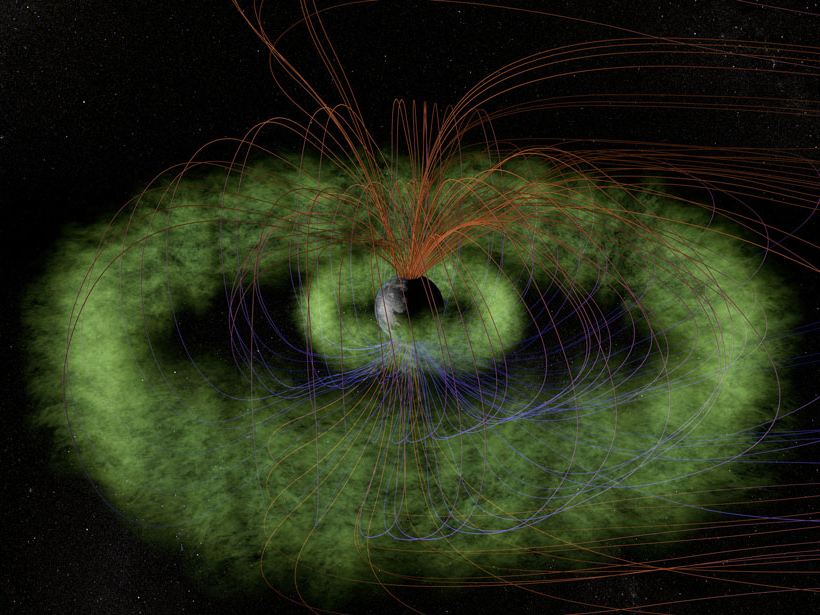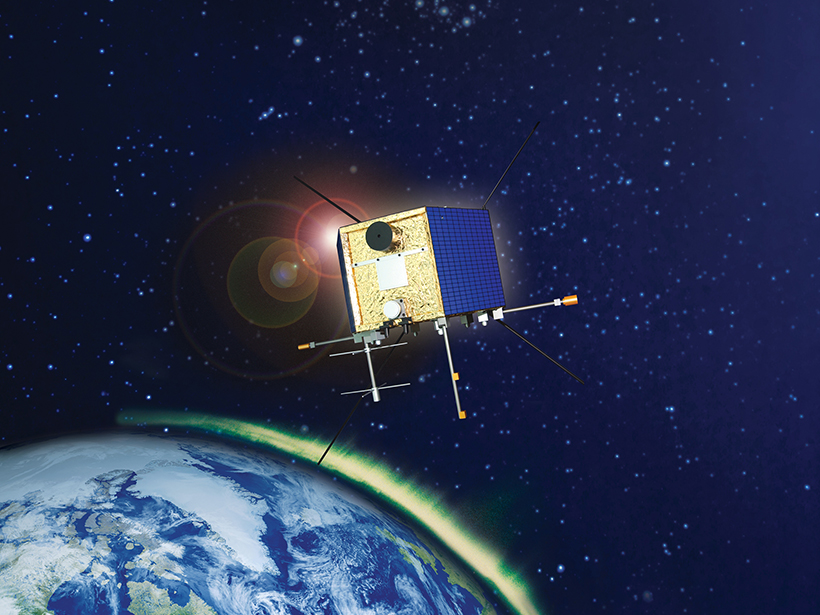The Van Allen radiation belts surrounding Earth shrink and swell due to plasma waves moving through them, an analysis of satellite data suggests.
plasmas
Calculating Plasma Waves—With a Twist
What happens when two plasmas with different temperatures overlap? The answer depends on a quantum effect that twists the waves as they ripple through the sea of electrons.
Scientists Probe the Calm After Solar Storms
In forecasting the effects of solar storms, understanding how they subside—and not just how they arrive—will be crucial.
How Lightning Creates "Killer Electrons" in Earth's Radiation Belts
New calculations show that lightning-triggered plasma waves in Earth's magnetosphere absorb energy from slow particles and energize electrons to levels that can damage satellites severely.
Plasma Waves Pinpointed at the Site of Magnetic Reconnection
When the Earth's and the Sun's magnetic fields meet, they realign in explosive and mysterious reconnections. Data suggest that plasma waves called kinetic Alfvén waves play a key role.
Jupiter's Auroras Recharge Between Solar Storms
New research suggests that Jupiter's magnetic field replenishes its stock of plasma during lulls in solar activity, creating spectacular displays when a solar storm hits.
Forecasting Space Weather Like Earth Weather
Researchers find that as with terrestrial weather, ensemble forecasting—which uses several different models simultaneously—is the best way to produce accurate and precise forecasts of space weather.
Tracking Ions at the Edge of the Atmosphere
The first results from a recently launched satellite hold promise for studying solar storms, the very top of Earth's ionosphere, and how the atmosphere is evolving.
Patches of Low Electron Density Help to Heat the Ionosphere
Simulations show how changes in electron density can trap electromagnetic waves and heat electrons in the ionosphere.
Mysterious "Necklace Echoes" in the Sky Explained
Scientists studying a 50–year–old mystery in the Earth's ionosphere have come up with their best explanation of it yet.








